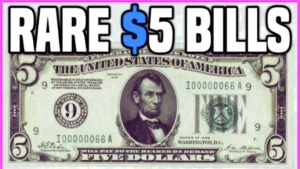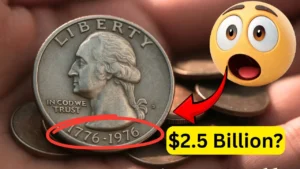Imagine finding a penny in your pocket change that’s worth $49,000! The Lincoln Wheat Penny, a small coin minted in the United States from 1909 to 1958, has some rare versions that can fetch huge sums at auctions. These coins, featuring Abraham Lincoln on one side and wheat stalks on the other, are treasures for collectors. But could one of these valuable pennies still be hiding in your loose change? Let’s dive into the history, value, and tips for spotting these rare coins.
What Is the Lincoln Wheat Penny?
The Lincoln Wheat Penny, often called the “Wheat Penny,” was first made in 1909 to celebrate the 100th anniversary of Abraham Lincoln’s birth. Designed by Victor David Brenner, it shows Lincoln’s face on the front and two wheat stalks on the back, giving it its nickname. This penny was minted until 1958, when it was replaced by the Lincoln Memorial design. While most Wheat Pennies are worth just a few cents, some rare ones can be worth thousands.
Why Are Some Wheat Pennies So Valuable?
Certain Wheat Pennies are worth a lot because of unique features or mistakes made during their production. Here are the main reasons:
- Minting Errors: Mistakes like double-die errors (where the design looks doubled) make a coin rare.
- Low Production: Coins made in smaller numbers are harder to find, increasing their value.
- Condition: Coins in great shape, especially uncirculated ones, are worth more.
- Rare Years and Mint Marks: Specific years like 1943 (bronze) or 1909-S VDB are highly sought after.
For example, the 1943 bronze penny is a famous error coin. During World War II, pennies were made of steel to save copper, but a few were accidentally made with bronze, making them extremely valuable, sometimes worth $49,000 or more.
Can You Still Find Valuable Wheat Pennies in Circulation?
It’s unlikely but possible to find a valuable Lincoln Wheat Penny in everyday change. Most high-value pennies have been collected by enthusiasts or dealers, but some could still be in old coin jars, family collections, or even your pocket. Stories of people finding rare coins in change keep the excitement alive for collectors.
Where to Look for Wheat Pennies
Here are some places where you might find these coins:
- Coin Rolls from Banks: Older pennies sometimes show up in rolls from banks.
- Old Collections: Check family heirlooms or jars of coins saved over the years.
- Flea Markets or Yard Sales: People might sell valuable coins without knowing their worth.
| Place to Look | Why It’s a Good Spot |
|---|---|
| Coin Rolls | Banks may have older coins mixed in. |
| Inherited Collections | Old coin jars might hold rare pennies. |
| Flea Markets/Yard Sales | Sellers may not know the coin’s true value. |
How to Spot a Valuable Wheat Penny
To find out if a Wheat Penny is valuable, check these details:
- Year: Look for rare years like 1909-S, 1914-D, 1931-S, or 1943 (bronze).
- Mint Mark: Check for a small “S” (San Francisco), “D” (Denver), or no mark (Philadelphia) under the year.
- Condition: Coins with clear details and no wear are worth more.
- Errors: Look for unusual features, like doubled text or numbers.
If you think you’ve found a rare penny, use a magnifying glass to inspect it closely. Compare it to a coin guidebook like the Red Book or consult a professional coin appraiser to confirm its value.
Steps to Check a Penny’s Value
- Examine the Coin: Look at the year, mint mark, and any errors using a magnifying glass.
- Compare with Guides: Use online resources or books to estimate its worth.
- Get Expert Help: Visit a trusted coin dealer for a professional valuation.
- Protect the Coin: Store it in a protective holder to keep it in good condition.
| Step | Action |
|---|---|
| Examine the Coin | Use a magnifying glass for details. |
| Compare with Guides | Check online or book resources. |
| Get Expert Help | Consult a coin dealer or appraiser. |
| Protect the Coin | Use a protective holder. |
Market Trends for Wheat Pennies
The value of Wheat Pennies changes based on what collectors want. Rare coins like the 1943 bronze penny or the 1909-S VDB (with the designer’s initials) are in high demand. Recent auctions show these coins selling for $40,000 to $49,000, depending on their condition. Staying updated on numismatic news can help you understand current trends.
Tips for Coin Collectors
- Start Small: Begin with common Wheat Pennies, which are easy to find and affordable.
- Join a Community: Connect with coin clubs or online forums for tips and trading.
- Stay Informed: Follow news about rare coins and market trends.
- Be Careful: Watch out for fake coins or scams when buying from unknown sellers.
Conclusion
The Lincoln Wheat Penny is a small piece of American history with the potential for big value. Rare versions, like the 1943 bronze penny worth up to $49,000, might still be out there in circulation, hiding in coin jars or loose change. By learning to spot key years, mint marks, and errors, you could discover a hidden treasure. Whether you’re a new collector or just curious, checking your change for a Wheat Penny is an exciting adventure. Start looking today—you never know what you might find!
FAQs
What is the Lincoln Wheat Penny?
The Lincoln Wheat Penny is a U.S. one-cent coin minted from 1909 to 1958, featuring Abraham Lincoln on the front and wheat stalks on the back.
Why are some Wheat Pennies worth so much?
Certain Wheat Pennies are valuable due to minting errors, low production numbers, excellent condition, or specific years like 1943 (bronze).
Can I still find a $49,000 Wheat Penny in circulation?
It’s rare but possible. Check coin rolls, old collections, or flea markets for these coins.
How do I know if my Wheat Penny is valuable?
Check the year, mint mark, condition, and any errors. Use a coin guide or consult a professional appraiser.
What should I do if I find a rare penny?
Store it in a protective holder and get it appraised by a certified coin dealer to confirm its value.




